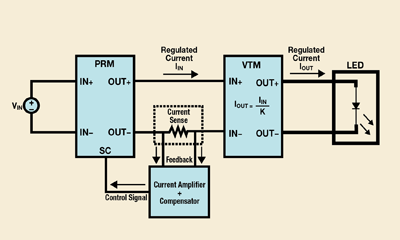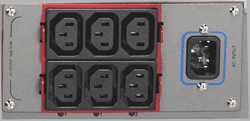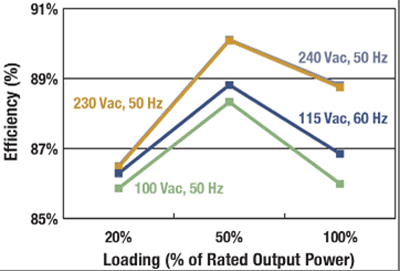Power Requirements for LED Applications
LEDs provide higher efficiency than incandescent designs, but they also have different electrical requirements.

Fig. 2 Controlled current solution for powering LEDsRecent breakthroughs in LED technology have enabled LEDs with a broad spectrum of light output to be produced and not just the traditional red and green derivatives. Hence the sheer numbers of LEDs used in products (lighting and otherwise) is growing… http://www.nxtbook.com/nxtbooks/hearst/projectpower_vol2no2/index.php?startid=5
Increase efficiencies with HV supplies, 208-V UPSs
Understanding existing methods and systems can bring immediate efficiencies and money to the bottom line.

Remove the input cable from your IT equipment and simply plug it into the input IEC receptacle of the UPS (blue circle). Use the various jumper cables provided with the UPS to connect the IEC outlets of the UPS (red) with the various IT devices you want to protect.
Maximizing energy efficiencies is rapidly becoming significant in saving costs and reducing an organization’s carbon footprint… http://www.nxtbook.com/nxtbooks/hearst/projectpower_vol2no2/index.php?startid=9
Beyond the datasheet — PC efficiency for the real world
Get proof of the datasheet by requesting efficiency test results from different loads and voltages.

Efficiency measurements at different loads and voltages
Under commercial, environmental, and legislative pressures to deliver “greener” desktop PCs and servers, engineers are faced with the challenge of implementing PC power supplies that comply with efficiency standards such as 80 Plus, Energy Star, and the Climate Savers Computing Initiative (CSCI)…
http://www.nxtbook.com/nxtbooks/hearst/projectpower_vol2no2/index.php?startid=14
Challenges of Powering FPGAs
Powering Xilinx FPGAs presents many challenges because FPGAs require multiple voltage rails, each emphasizing different requirements…
http://www.nxtbook.com/nxtbooks/hearst/projectpower_vol2no2/index.php?startid=20
We need efficient power now
The mantra in power supplies is efficiency, no matter the end use. All industries want more power and more efficiency. The International Energy Agency (IEA) recently warned that unless counter measures were taken now, the energy consumed by household electronic devices could triple by 2030.
Electronic devices currently account for 22% of household electricity consumption in America — and this is rising rapidly.
Changes and upgrades are happening to increase efficiency, sometimes in what initially seems curious places. For example, casinos are saving thousands of dollars each year in energy costs by installing LED designs in their machines, reducing power consumption up to 80% (and some say they improve the look of the lit-up graphics). The use of LED technology leads to lower power consumption (saves energy), longer life (up to 5 years, which also saves on labor and time), and less heat generation so nearby components won’t fail as quickly, and the by-products are less cooling needed and therefore a lower electric bill. The energy savings are huge and can mean for the power company and the state the difference between needing a new power plant and going into debt versus making a profit because of the improved efficiency.
To help keep your skills honed we offer three articles on efficiency. The first one discusses LED power needs, another informs you about the increase in efficiency you can expect from using a higher voltage supply, and the third provides insight into reading between the lines of data sheets and getting proof about the information. A fourth article discusses the higher power output requirements that make efficiency and thermal dissipation primary concerns for the newest FPGAs.
Paul O’Shea
For more information about Project Power, please visit www.electronicproducts.com/projectpower
Advertisement
Learn more about Electronic Products Magazine





